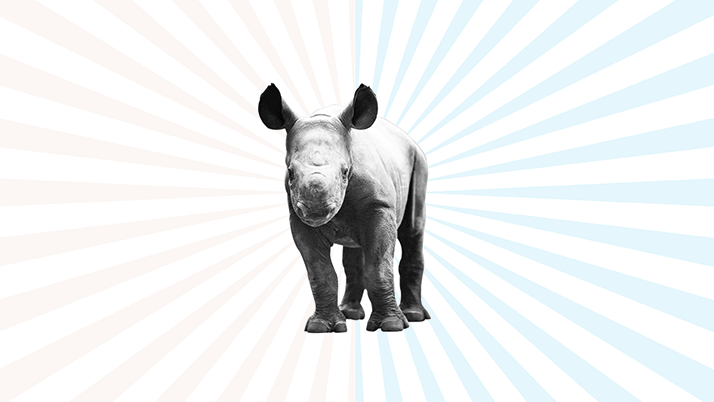Analysing black rhino faeces might not be every scientists’ idea of fun, but for Sue Walker, wildlife endocrinologist at Chester Zoo, UK, there is valid method behind apparent madness. There are less than 600 East African black rhinos left in Kenya, which make up 70 per cent of the global population. Therefore, maintining a genetically healthy and viable captive population is incredibly important; however, managing and breeding black rhinos in captivity is not straightforward. “When working with wildlife, we try to do everything non-invasively. We don’t even want to touch the animals, so we use faeces, urine – anything we can easily get our hands on,” says Walker. But stepping away from traditional blood sample analysis causes problems, especially when it comes to studying the hormones that can help improve breeding program success. “If you analyse blood from the animal, the hormones are equivalent to human progesterone and oestrogen. In other words, native hormones that are quite easy to identify with enzyme immunoassay (EIA) tests,” Walker explains. “But in our complex samples, those hormones have been broken down, and we need to confirm that the metabolites measured with EIA are reflective of what’s going on in the animal’s endocrine system.” Linking unknown metabolites to their parent hormones with EIA alone is difficult, because of antibody cross-reactivity. The complex relationship between hormones related to reproductive health (progesterone, oestrogen and testosterone) and those known to indicate the impact of potential stress (glucocorticoids) further clouds the issue. Confirmation of the results is essential.

How one company’s scientific know-how is helping a black rhino breeding program
Analysing black rhino faeces might not be every scientists’ idea of fun, but for Sue Walker, wildlife endocrinologist at Chester Zoo, UK, there is valid method behind apparent madness. There are less than 600 East African black rhinos left in Kenya, which make up 70 per cent of the global population. Therefore, maintining a genetically healthy and viable captive population is incredibly important; however, managing and breeding black rhinos in captivity is not straightforward.“When working with wildlife, we try to do everything non-invasively. We don’t even want to touch the animals, so we use faeces, urine – anything we can easily get our hands on,” says Walker. But stepping away from traditional blood sample analysis causes problems, especially when it comes to studying the hormones that can help improve breeding program success. “If you analyse blood from the animal, the hormones are equivalent to human progesterone and oestrogen. In other words, native hormones that are quite easy to identify with enzyme immunoassay (EIA) tests,” Walker explains. “But in our complex samples, those hormones have been broken down, and we need to confirm that the metabolites measured with EIA are reflective of what’s going on in the animal’s endocrine system.” Linking unknown metabolites to their parent hormones with EIA alone is difficult, because of antibody cross-reactivity. The complex relationship between hormones related to reproductive health (progesterone, oestrogen and testosterone) and those known to indicate the impact of potential stress (glucocorticoids) further clouds the issue. Confirmation of the results is essential.
